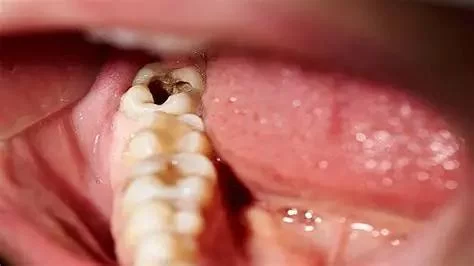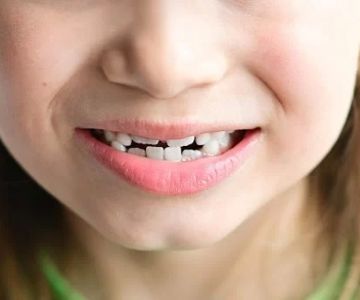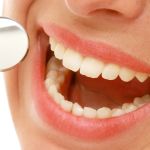
Understanding the Subtle Signs of Early Tooth Decay
- minor-discoloration-may-signal-decay-starting
- sensitivity-to-sweets-cold-or-heat
- surface-roughness-or-chalky-white-spots
- persistent-bad-breath-and-metallic-taste
- personal-experience-a-small-spot-that-spoke-volumes
- why-early-detection-saves-smiles
1. Minor Discoloration May Signal Decay Starting
The earliest sign of tooth decay is often visual — small brown, gray, or even white spots on the enamel. While it’s tempting to overlook a tiny dot, these spots may indicate mineral loss that marks the beginning of a cavity.
Dr. Amelia from Dentistry Toothtruth explains, “Patients often assume discoloration is harmless staining, but when we examine closely, it’s early-stage decay. Catching it here can avoid drilling later.”
2. Sensitivity to Sweets, Cold, or Heat
2.1 Sweet Sensitivity as a Red Flag
If sugary foods suddenly trigger a sharp jolt in a specific tooth, take notice. Sensitivity to sugar — especially sticky treats like caramel or hard candy — can mean enamel is weakening and decay is setting in.
2.2 Temperature Changes Causing Discomfort
A sudden zing from a cold drink or hot soup is often one of the earliest functional symptoms. Even brushing with cold water can become uncomfortable if decay has thinned the enamel and exposed sensitive dentin.
3. Surface Roughness or Chalky White Spots
3.1 Texture Change is More Than Cosmetic
Running your tongue over a rough patch on your tooth? If it wasn’t there before, it may be decay-related demineralization. Teeth should feel smooth and glassy, not gritty or uneven.
3.2 Early Demineralization Appears as White Lesions
A chalky white spot near the gumline often means acids are beginning to eat away at your enamel. With fluoride and remineralization products from Dentistry Toothtruth, these spots can be reversed — if caught in time.
4. Persistent Bad Breath and Metallic Taste
Chronic halitosis (bad breath) isn’t always from your diet. It can be a sign of bacteria thriving inside a developing cavity. A metallic or bitter taste may also appear as decay advances — both should prompt a dental check.
Ignoring these clues can allow cavities to deepen and reach the nerve, causing infection or the need for a root canal.
5. Personal Experience: A Small Spot That Spoke Volumes
When Sophie, a 32-year-old marketing manager, noticed a pinhead-sized brown dot on her molar, she nearly dismissed it. “It wasn’t painful, just there,” she recalls. After some gentle prodding from her sister — a dental hygienist — she booked a checkup.
That tiny spot was the early stage of enamel erosion. Her dentist applied a fluoride treatment and sealed the area. A quick fix, compared to what could have become a major filling months later. “I’m so glad I caught it early,” she says.
6. Why Early Detection Saves Smiles
Recognizing the signs of early tooth decay can mean the difference between a simple remineralization process and a costly, invasive restoration. Acting early allows your dentist to apply fluoride varnishes, sealants, or offer guidance on diet and hygiene improvements.
Your dental health is not just about appearance — it's about comfort, confidence, and longevity. If you notice any of the symptoms above, trust your instincts and book a visit.
For expert-recommended products, from enamel-strengthening toothpaste to early-stage decay monitors, visit Dentistry Toothtruth — your trusted partner in keeping smiles bright and decay-free.







 Towning Dental4.0 (36 review)
Towning Dental4.0 (36 review) Millennium Dental Arts5.0 (235 review)
Millennium Dental Arts5.0 (235 review) Fullerton Dental Care4.0 (59 review)
Fullerton Dental Care4.0 (59 review) Joseph Spina III, DMD4.0 (40 review)
Joseph Spina III, DMD4.0 (40 review) Dental Office0.0 (0 review)
Dental Office0.0 (0 review) Blessed Smile Dentistry of Yorba Linda4.0 (42 review)
Blessed Smile Dentistry of Yorba Linda4.0 (42 review) The Importance of Oral Health Education During Pregnancy for a Healthy Pregnancy
The Importance of Oral Health Education During Pregnancy for a Healthy Pregnancy Best Tips for Brushing Your Teeth Properly for Healthy Gums: Essential Techniques for Oral Health
Best Tips for Brushing Your Teeth Properly for Healthy Gums: Essential Techniques for Oral Health Why Skipping Dental Checkups Can Lead to Bigger Oral Health Problems
Why Skipping Dental Checkups Can Lead to Bigger Oral Health Problems Advantages of Porcelain Dental Restorations
Advantages of Porcelain Dental Restorations How Can Diabetes Cause Tooth and Gum Problems? Preventing and Managing Oral Health Issues
How Can Diabetes Cause Tooth and Gum Problems? Preventing and Managing Oral Health Issues Healthy Habits for Promoting Good Oral Health and Hygiene: Tips for a Healthy Smile
Healthy Habits for Promoting Good Oral Health and Hygiene: Tips for a Healthy Smile